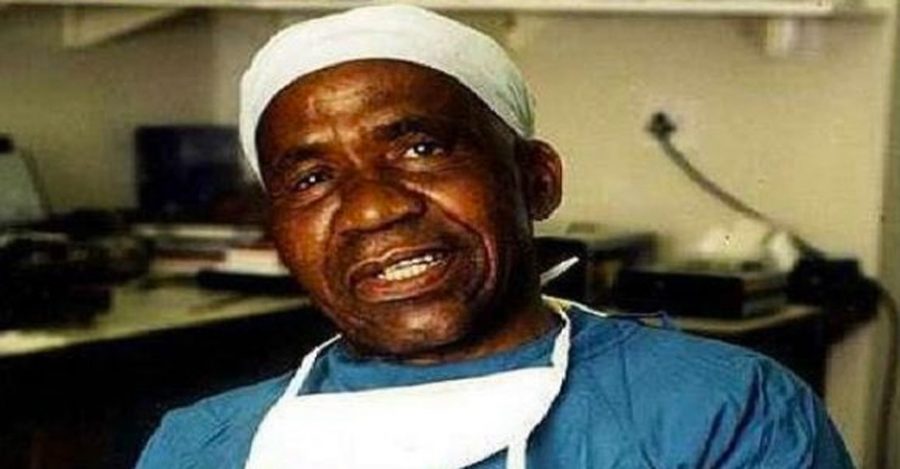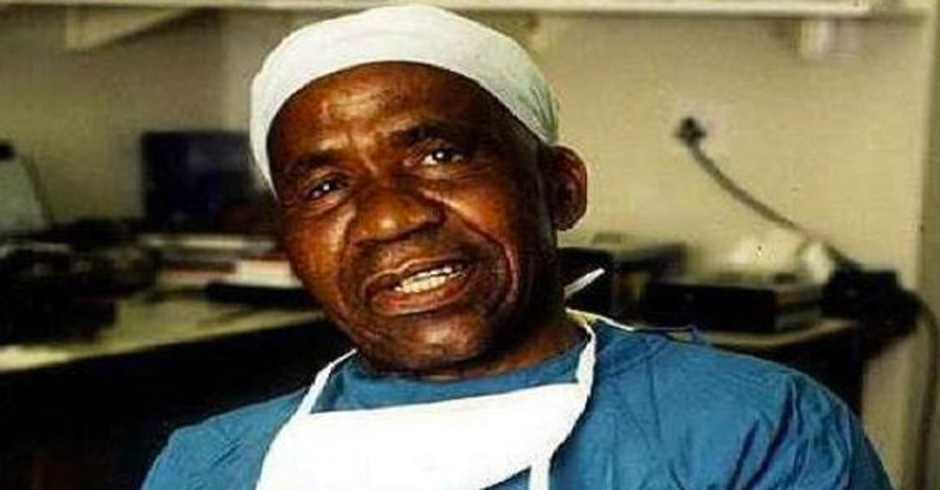Numerous incorrect reports claiming that he did participate have surfaced during the past two decades. It forced some of the most prestigious newspapers, such as the New York Times, The Economist, the Associated Press, and peer review journals such as the British Medical Journal and The Lancet to publish corrections.
But who was Hamilton Naki and what role did he play in South African medical history?
Started as a university gardener
Naki was born on 26 June 1926 in Centane in the Eastern Cape and only progressed to Standard 6 (currently Grade 8) at school. His first job at the University of Cape Town was a gardener before he was noticed by Dr Robert Goetz, who had a defining influence in Naki’s life. Goetz taught him how to dissect animals and operate on them.
Professor Rosemary Hickman, a renowned and skilled surgeon who knew Naki well, wrote that “Naki had an amazing ability to learn anatomical names and recognise anomalies. His skills ranged from assisting to operating and he frequently prepared the donor animal (sometimes single-handedly) while another team worked on the recipient.”
It was in his role as laboratory assistant that Naki much later crossed paths with the Barnard brothers. Dr Christiaan Barnard had returned to South Africa in 1958 after studies abroad and began mastering the techniques of organ transplants, conducting South Africa’s first human kidney transplant in September 1964.
By 1967, Christiaan’s brother Marius had also returned from the United States. He started preparation for the first human heart transplant by working on dogs in the laboratory.
A 2014 overview article in The Bulletin of the Royal College of Surgeons of England described Naki’s role: “Naki anaesthetised the dogs for the earlier work in heart surgery in the laboratory, which was on the establishment of open heart bypass, using an external heart pump. This was a finger pump that circulated blood through heat exchangers that were warmed or cooled by huge steel tanks of water. Such pumps were difficult to maintain and often broke down unexpectedly.”
In his first interview in 30 years in 2011, Dr Marius Barnard told me that Naki was “asleep in his bed during the first heart transplant”. He said it would have been illegal and unethical to allow anyone to operate on another human without the necessary medical qualifications.
Marius and Dr Terry O’Donovan removed the heart of the first donor, Denise Darvall, which Dr Christiaan Barnard then transplanted into Louis Washkansky, achieving a world first.
Naki had ‘nimble fingers’
In 1968, Naki was moved to the laboratory of a newly founded heart transplant unit.
“He fell out, however, with an intransigent visiting French surgeon, and so when Victor Pick, then the senior assistant at [UCT’s] JS Marais laboratory, was tragically killed in a road accident, Naki was asked to return,” the Royal College of Surgeons of England’s Bulletin continued.
At the experimental surgical operating table, Naki worked on baboons, rabbits, dogs and pigs to advance the work on liver transplants, in particular. The article further mentions that he was always punctual, keen to show his skills, friendly and had “nimble fingers”.
“As the most senior member in the laboratory, Naki came to be considered its leader and began to impart the knowledge he had acquired to a long series of trainees. He demanded high standards and became a strict taskmaster.
“Naki demonstrated dissection and surgical procedures to more than 12 trainees who were later to become professors of surgery.”
British Medical Journal retracts obituary
Before Naki’s death, he was awarded the Order of Mapungubwe in bronze by President Thabo Mbeki in 2002 and received an honorary Master of Science in Medicine degree from the University of Cape Town in 2003.
When he died on 29 May 2005, several obituaries were published locally and overseas. The British Medical Journal later had to retract their obituary because it inaccurately stated that Naki had participated in the first heart transplant, operated on humans and worked at the Groote Schuur hospital.
The then dean of UCT’s faculty of health sciences, who knew Naki at the time of the first heart transplant, wrote: “It is distressing that a fiction is gathering momentum and tarnishing the name of a highly talented and good man with an untruth. The suggestion that Hamilton Naki performed the donor operation was never mentioned in life by the man himself, by the department of cardiac surgery, or by the university in his citation for his honorary degree in 2003. It was not mentioned at his family funeral, or at the memorial service in the medical school experimental laboratory. The reason for this: it never happened.”
Commenting on the inaccurate reports, surgeon and member of the council at the University of Cape Town, Prof John Terblanche, wrote in the South African Medical Journal: “The scurrilous claims made in these obituaries belittle the very special person Hamilton Naki was.”
Netcare posthumously honoured Naki as well as the surviving team of the first heart transplant with a gold award when the new Netcare Christiaan Barnard Memorial Hospital was opened at the end of last year. The company also offers the Hamilton Naki Clinical Scholarship. In April 2017, the City of Cape Town approved the renaming of Salazar Plein on Cape Town’s foreshore to Hamilton Naki Square.
It is clear that Naki’s contribution was great, but also greatly dramatised by some media, the filmmaker Dirk de Villiers as well as the film Hidden Heart, made by Swiss writers Cristina Karrer and Werner Schweizer.
It may be true that with proper schooling, matric and eventually all the required medical qualifications, Hamilton Naki would have become a surgeon.
He had the interest and dedication but the circumstances, and of course apartheid, was against him.
The hallowed halls of a medical school were closed to someone like him. And that is the painful truth about Hamilton Naki.
Elsabe Brits is a science journalist at Netwerk24.
© Copyright Africa Check 2017. This report was written by Africa Check, a non-partisan fact-checking organisation. View the original piece on their website.



